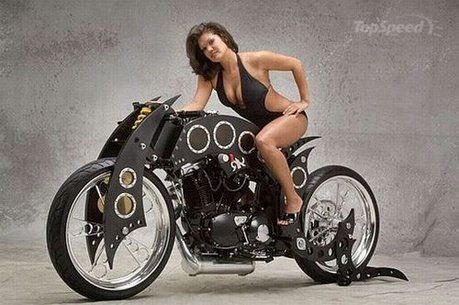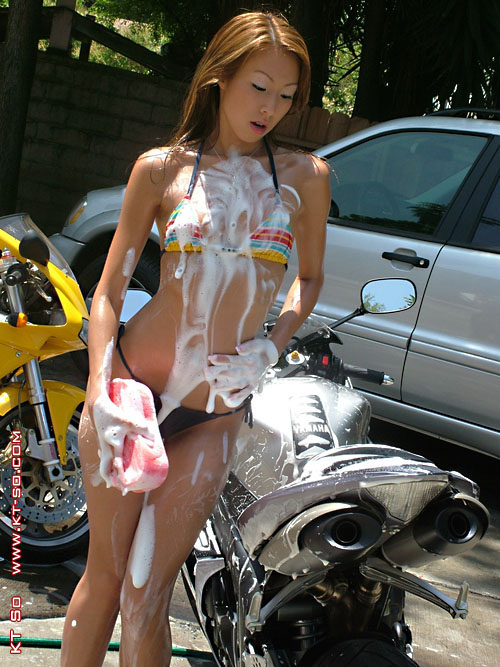by Dave Royston
The RaceFog covered the Isle of Man on Friday June 21st, the appointed day of the 1935 Senior TT, and the race was postponed to 11 am the next day. As Saturday dawned, fog still covered the Island and many were concerned that the race could be cancelled. The start was put back half an hour

to 11:30. With tension building, the clock crept towards the new deadline. Finally the fog lifted enough for the race to start; all involved looked to the event with great expectations.
With the winning tradition of Norton on his shoulders, Jimmie Guthrie, carrying number 1 as last year’s winner (pic 1 - the '35 Norton team; pic 2, Guthrie starting off), was first away and set off with fierce determination and at a pace no doubt intending to break the Moto Guzzi v-twin, or at least its rider’s spirit. Stanley Woods carrying number 30 (pic 3) started 14½ minutes later and set a steady pace. After the lap one, Guthrie was first at 26 minutes and 52 seconds; his teammate Rush was second, and Woods came by trailing by 28 seconds, and in third on corrected time. Norton must have been feeling confident, but was this part of a strategy by Woods? Perhaps a cautious lap to learn the conditions? Perhaps a top-heavy bike running with extra fuel? On the next lap the pace picked up. Jimmie Guthrie was riding the best race of his life so far and broke the lap record at 26

minutes and 31 seconds. But Woods had also picked up his pace and moved into second, but still came through 47 seconds behind on corrected time. Now that Guthrie was pushed to ride at a record pace, could it be maintained? Would his age at 38 tell over the length of this gruelling 7-lap, 3-hour race?
On the third lap, all teams took on fuel. Guthrie came into the pits after yet another lap record of 26 minutes and 28 seconds. The Norton team moved smoothly into well-practiced action and had him refuelled and out in 33 seconds, by an observing reporter’s stopwatch. Almost 15 minutes later Woods came into the pits, now 52 seconds behind and, to the surprise of onlookers, in a lightning stop, was away in 31 seconds, by the same watch. With such a short stop, there was speculation as to whether the twin had enough fuel to make the next four laps at record pace? This was especially relevant given Woods' experience with the Husqvarna (running out of fuel) the year before.

On the Fourth Lap, both Guthrie and Woods continued at near record pace.
Motorcycling magazine shows pictures of both riders and their bikes coming down Bray Hill. The Norton has its front wheel in the air; the Moto Guzzi is firmly planted on the ground. It was said the sprung frame could be worth as much as 20 seconds a lap; would it? Woods closed the gap to 42 seconds.
On the fifth lap, Woods reduced the lap record to 26 minutes and 26 seconds, closing the gap to 29 seconds. He had pulled back 13 seconds on just one lap; the challenge was on.
We now come to the end of the critical sixth lap. Guthrie’s Norton went through without refueling. The Moto Guzzi team busied themselves, setting up for a fuel-stop, and the grandstand crowd expected Woods and the thirsty Guzzi to stop for fuel. Joe Craig may have thought Norton had the race won. It is said he had sent signals to his station at Glen Helen for Guthrie, almost ⅔ of a lap ahead, to ease his pace, perhaps fearing the record laps could fatigue the bike and the rider.

Stanley Woods and the Guzzi could be heard approaching the Grandstand. To the surprise of everyone but the Guzzi team, he shot through, on the tank, flat-out, now 26 seconds behind; man and machine on a mission. Could the Moto Guzzi pit-stop ploy have made a difference? Norton immediately rang through to their man in Ramsay, to signal Guthrie to speed up. It was now all up to Woods. As Mario Colombo (from a Guzzi perspective) puts it: “L’ultimo giro, il settimo, si svolge in un ’atmosfera di tormento e di sofferenza, gli occhi al cronometro, l’orecchio teso” (“The seventh and last lap unfolded in an atmosphere of suffering and torment, with all eyes on the stopwatches and all ears alert”). Reports were coming through that Woods was running fast all around the circuit: the Moto Guzzi ‘bicilindrica’ was rising to the occasion. At the base of the mountain, he had the gap down to 12 seconds; descending the mountain the bike was timed at 125mph. At Creg-Ny-Baa the gap was 6 seconds. Guthrie had come through on his seventh and final lap at near-record pace – he knew Woods well enough not to trust the signals. Colombo writes: "Guthrie arrived at the finish and silence fell like a tanigible thing; everyone had their eyes fixed on the final straight." Not 'everyone', it seems; the officials and the radio commentary, based on the times from the

sixth lap, thought Guthrie had won. He was toasted and congratulated by the Governor of the Isle of Man.
Motorcycling magazine has a photograph of the Guthrie and the bike surrounding by supporters as a smiling ‘winner’. An official was leading Guthrie to the microphone when, after 14½ minutes of suspense, a characteristic roar approached, and the red Guzzi with Woods “buried in the tank” flashed across the line. “A thousand stopwatches clicked and feverish calculations were made”. The official escorting Guthrie was stopped with the news that Woods had won by 4 seconds. He’d done it. Woods had ridden an outstanding last record lap (26minutes and 10 seconds, 86.53 mph). His race time was 3 hours 7 minutes and 10 seconds, an average speed of 84.68mph. The crowd understood the significance of the moment, setting aside any thoughts of the ‘foreign menace’, the grandstand rose to cheer the winning team and rider, “…spectators thronged

around Guzzi, Parodi, Woods and the mechanics in a display of sporting spirit those present never forgot”.
Guthrie looked dazed by the abrupt change of fortune but took it in good grace, reflecting the depth of his character and reserved manner (off a bike!): he was amongst the first to congratulate Woods. After the race Jimmie Guthrie said; "I went as quick as I could but Stanley went quicker. I am sorry but I did the best I could." They were friends as well as rivals. Stanley Woods said years later: “I turned on everything I had on the last lap. I over-revved and beat him by 4 seconds and put up the lap record by 3-4 mph. And that (beating Norton), I think, gave me more satisfaction and more joy, the fact that I had beaten Norton. Its what I had set out to do. It was very very satisfactory”. Motorcycling magazine carried a second photograph with Stanley Woods, and his trademark grin, as the true winner of my ‘Greatest TT’.

Was the difference in those pit stops? It is possible both riders covered the ground in the same time. What about the fuel in Wood’s tank? A reporter said there was an inch in the bottom almost enough for another lap; it seems that the Guzzi did have an extra-large tank for the TT, maybe it was very full on the first slow laps. The Motorcycling magazine discusses whether the fake pit stop was sporting but accepts the tactic as legitimate (quaint considering team tactics these days). Perhaps for once 'the Fox' was just outfoxed?
What happened to these two great riders? Guthrie continued with Norton and turned the tables in the 1936 Senior TT (winning by 18 seconds over Woods now riding for Velocette). In 1937 Guthrie won the Junior but his bike broke down at ‘The Cutting’ in the Senior. He was killed later that year (at 40) while leading the German GP at the Sachsenring. Woods was

slowed in that race (by broken fuel line) and saw a rider ahead too close to Guthrie. It was said the accident was a result of mechanical failure. Woods, interviewed in 1992, said he thought Guthrie had been forced off line and into the trees at the Noetzhold corner. Woods was the first on the scene and went with him to the hospital: “the surgeon came out and said that they'd revived him momentarily, but that he had died. You can imagine how I felt. We'd been friends, team-mates and rivals for ten years. I was shattered." The ‘Guthrie Memorial’ stands where he had stopped in his last TT; the ‘Guthrie Stone’ marks the accident spot at the Sachsenring.
Woods won the Junior TT for Velocette in 1938 and 1939; he was also a close second on his Velocette (behind Norton) in the Senior TTs of ’36,’37 and ’38 and just missed third (by 6 seconds) behind Freddie Frith (Norton) when the BMW supercharged bikes took first and second in 1939. Woods did not return to racing after 1945 but did test rides (including on the

Guzzi V8 in’56) and demonstration rides at the TTs into his 80’s. It took Mike Hailwood to beat his ten TT wins. Stanley Woods died in 1993 aged 90, still regarded by many as the greatest rider of all

 must seize these last moments and get to know her better before she's grown up and gone. My wife is right that my motorcycles are an obsession, and really, since she asked me to choose, I choose her.
must seize these last moments and get to know her better before she's grown up and gone. My wife is right that my motorcycles are an obsession, and really, since she asked me to choose, I choose her. collection of racing machinery, with a few roadsters thrown in for good measure (13 Velocettes, 2 Sunbeams, 2 Nortons, 2 Douglas', 1 Royal Enfield, 1 Rex Acme, 1 Scott, 1 Rudge). I'm also selling a 30 years' collection of motorcycle books, around 1500 volumes in all, just about everything published in English about motorcycles before 1950. Also, there's a big collection of vintage riding gear, helmets, posters, files, photographs, special tools, and literally tons of spare parts (rare magnetos/racing carbs/wheels/frames/ girder forks/etc.) Retail value of all this would be around $740,000. I'll sell the lot for a fraction of that - $150k - just get it out of my life, so I can do something more productive. I've got my real estate license now, and a publisher for my self-help book on addiction, 'Swamped by Stuff'. My new life is waiting, help me start it now, you'll get an absolute bargain.
collection of racing machinery, with a few roadsters thrown in for good measure (13 Velocettes, 2 Sunbeams, 2 Nortons, 2 Douglas', 1 Royal Enfield, 1 Rex Acme, 1 Scott, 1 Rudge). I'm also selling a 30 years' collection of motorcycle books, around 1500 volumes in all, just about everything published in English about motorcycles before 1950. Also, there's a big collection of vintage riding gear, helmets, posters, files, photographs, special tools, and literally tons of spare parts (rare magnetos/racing carbs/wheels/frames/ girder forks/etc.) Retail value of all this would be around $740,000. I'll sell the lot for a fraction of that - $150k - just get it out of my life, so I can do something more productive. I've got my real estate license now, and a publisher for my self-help book on addiction, 'Swamped by Stuff'. My new life is waiting, help me start it now, you'll get an absolute bargain.




























